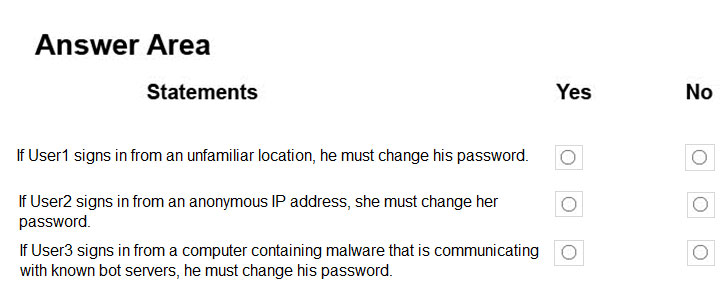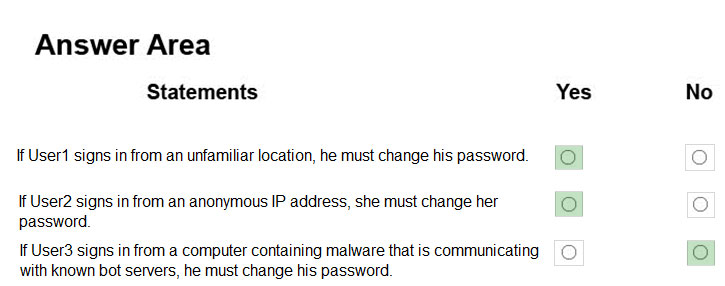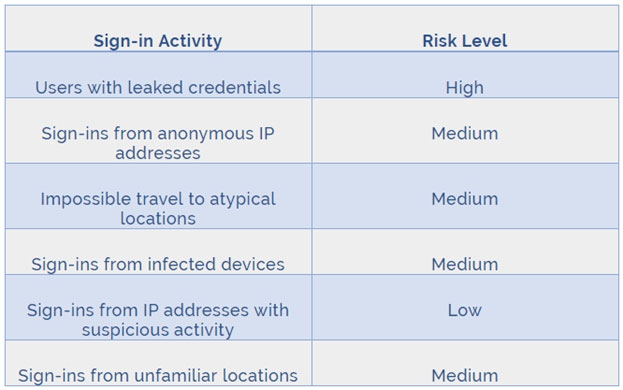HOTSPOT -
You have an Azure Active Directory (Azure AD) tenant named contoso.com that contains the users shown in the following table.

You create and enforce an Azure AD Identity Protection user risk policy that has the following settings:
✑ Assignment: Include Group1, Exclude Group2
✑ Conditions: Sign-in risk of Medium and above
✑ Access: Allow access, Require password change
For each of the following statements, select Yes if the statement is true. Otherwise, select No.
NOTE: Each correct selection is worth one point.
Hot Area:


